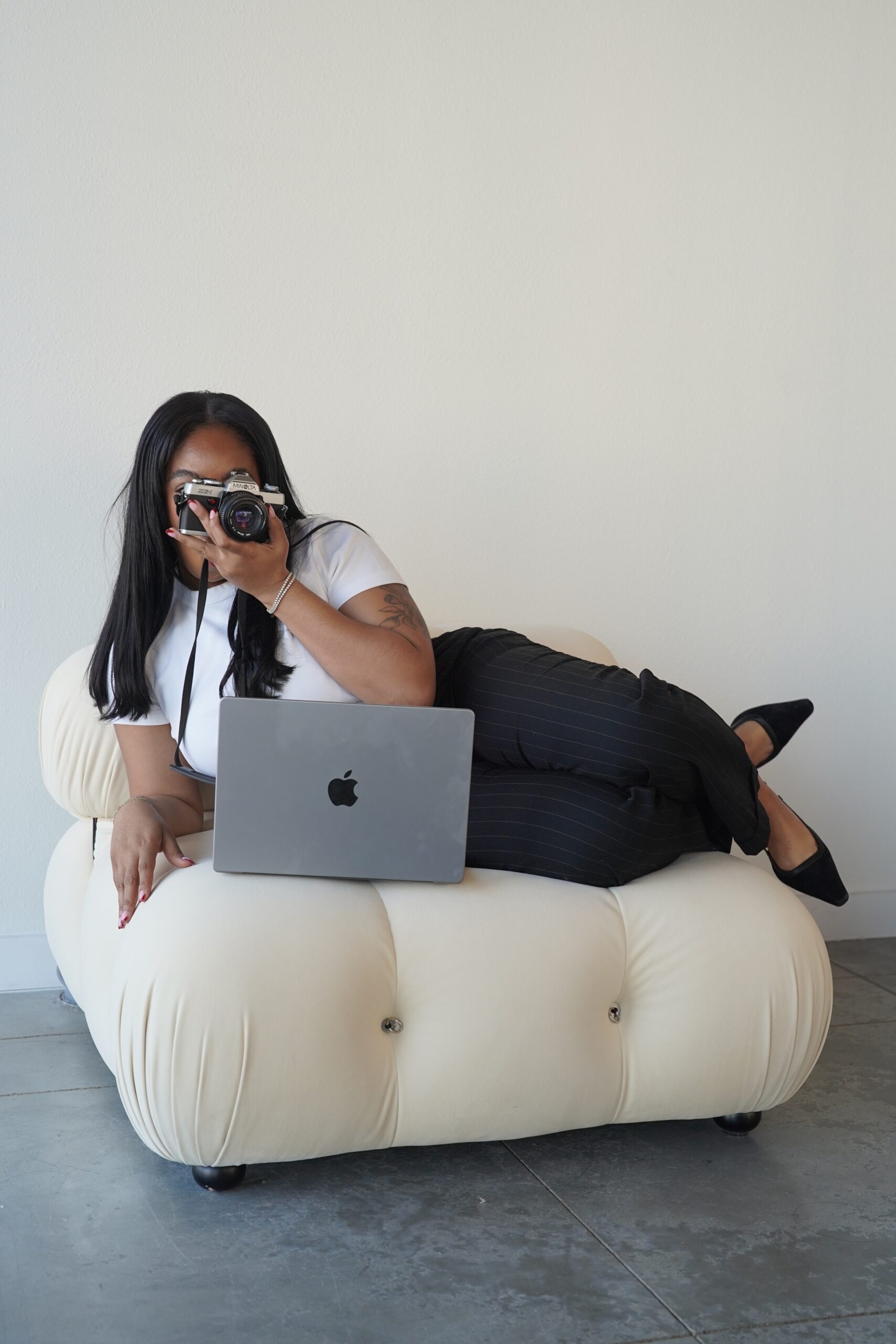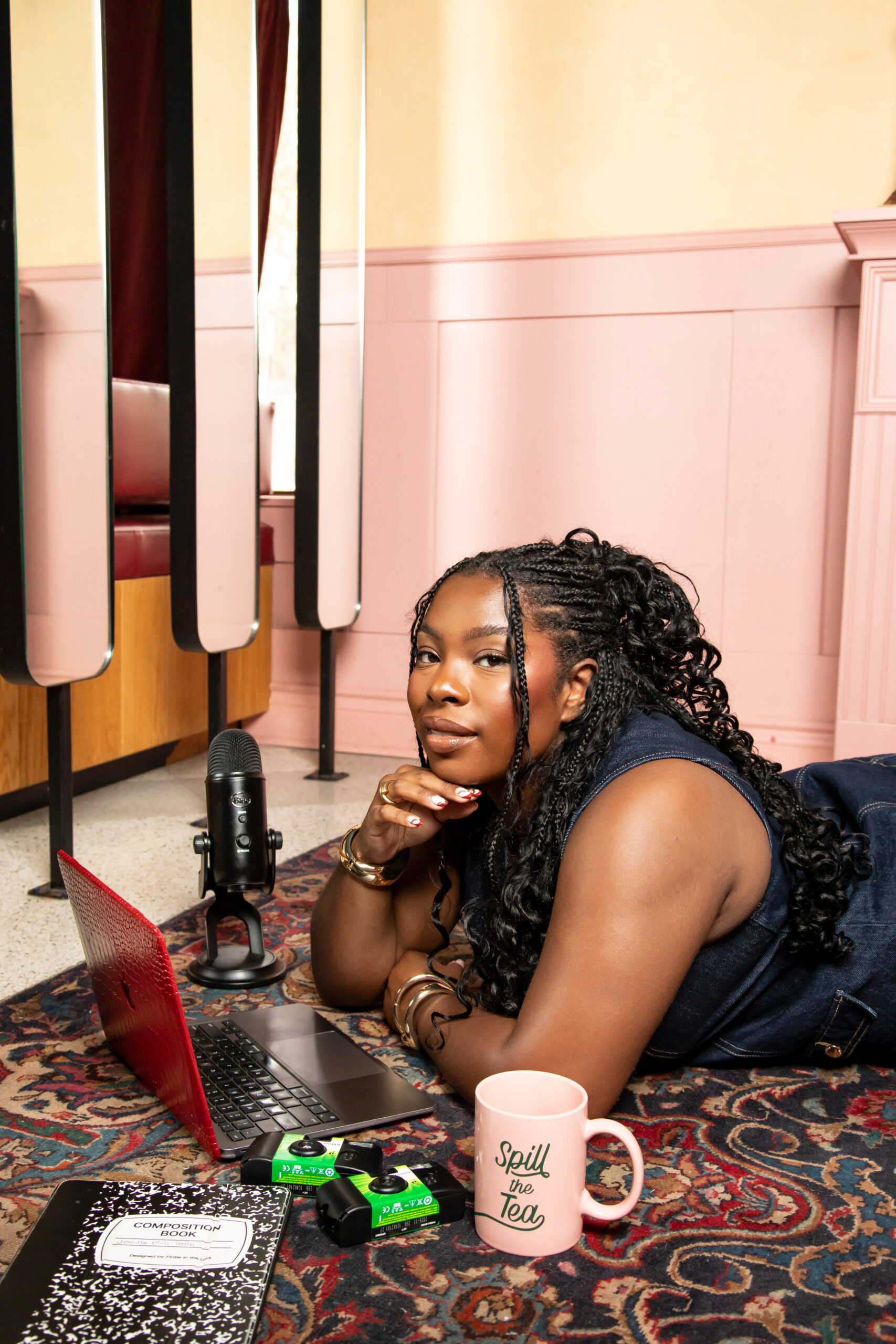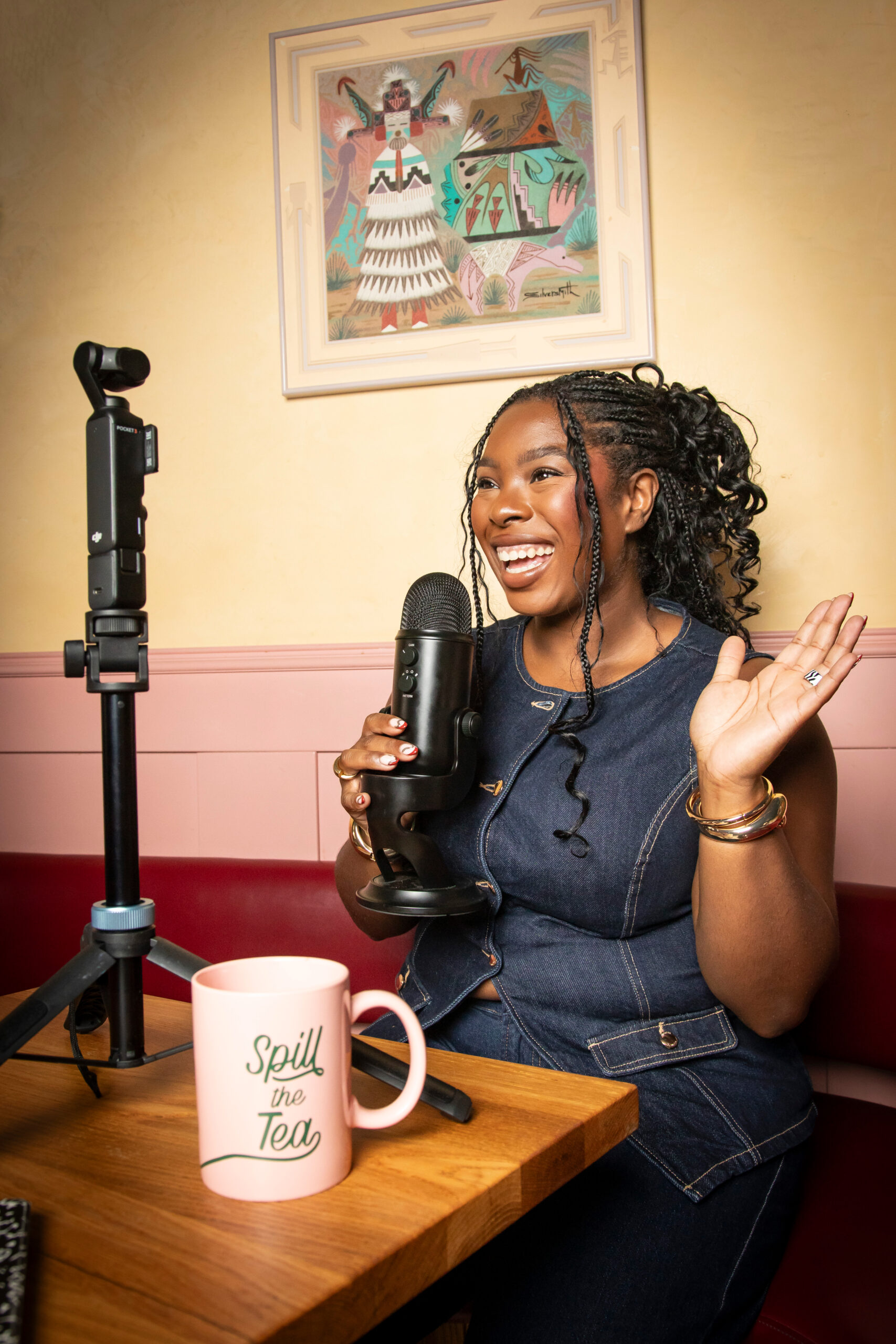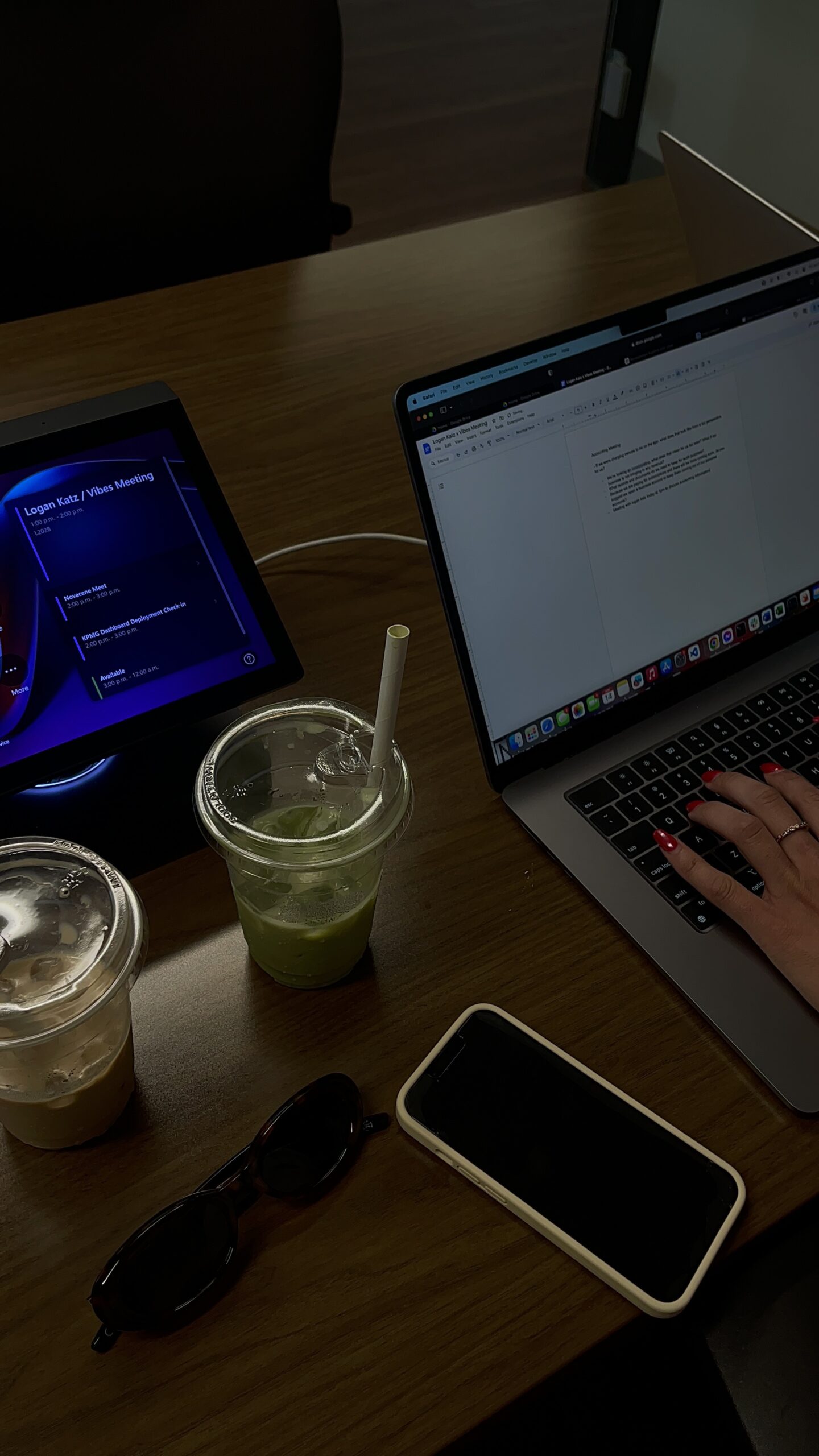HEY FRIEND!
I'm jemilla!
In the past 4 years, I’ve cut my teeth strategizing & writing award-worthy, revenue-increasing, results-snatching copy. And what really lights my fire is writing for woman-owned and BIPOC-led brands. I’m talkin’ the first day after a braiding appointment type of excited! Energizing them to go big with their bold ideas so that when launch time happens, the world thinks “OMG FINALLY, I’ve been waiting for something like this.” And giving them the tools to diversify the market.
about me
services
Things I Wish My Marketing Program Taught Me About Copywriting
January 20, 2025
Let me tell you about my marketing degree. Four years of textbooks, case studies, and PowerPoint presentations about the 4 P’s of marketing. And you know what wasn’t in any of those fancy textbooks? The real tea about copywriting.
Don’t get me wrong, my marketing program was great for understanding business fundamentals. But there’s a whole world of difference between writing a theoretical marketing plan for your final project and actually getting a client to trust you with their brand voice.
That’s why I’m spilling everything I wish they’d taught me in college about copywriting. From voice of customer research that goes beyond basic demographics to the cultural nuances that can make or break your copy. Consider this your crash course in real-world copywriting.
Voice of Customer Research
Voice of customer (VOC) are the words, phrases, and raw quotes your target audience uses. You’ve seen brands use this

— and you’ve seen brands try to use this.

There are too many copywriters out there that miss the mark with using VOC authentically and effectively.
Some of this has to do with African American Vernacular English (AAVE) being mistaken for “trending social media speak”. And when brands use this improperly, they come off cringe when they’re trying to be relevant
If we had learned how to do VOC research and use it effectively, we might see more brands dancing on the happy medium between brand voice and voice of customer.
Techniques and tools for finding voice of customer:
- Community mining on social media
- Consumer surveys and interviews
- Analyzing testimonials and customer feedback
Cultural Relevance in Copy
Another problem with brands trying to be relevant is trying to appeal to different cultural groups inauthentically.
That could be your race (e.g. Black & Brown people), your interests (e.g. gym rats), or your beliefs (e.g. a woman’s autonomy over her own body).
But let’s be real, there aren’t enough copywriters from diverse cultural groups that know how to appeal authentically to people of all backgrounds.
This has a lot to do with not getting to know the target audience beyond textbook demographics. Their race, where they live, yada yada yada, that’s base level stuff.
But what about how they make decisions? Their buying behaviour? A day in their lives?
Something as simple as knowing that if a Black woman is getting her hair braided, she’s working from the salon and showing up to virtual meetings sans camera because she’ll be there all day.
So a brand like Zoom could use this insight to their advantage when promoting their services to small business owners.
Or we could look at the textbook example of The Black Marlboro Man — who accurately depicted Black culture instead of a caricature that Tom Burrell suggested.
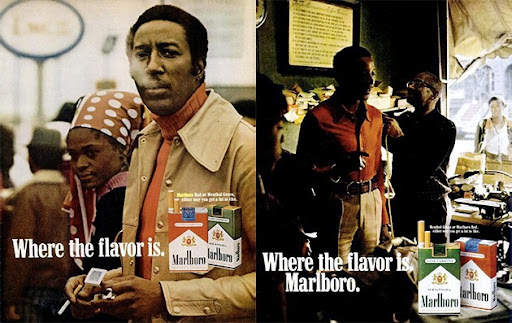
If we learned about this in school beyond the 4 Ps, we’d be able to write culturally-relevant copy for brands. Instead of making it obvious they just want to attract more buyers and pad their profits.
But what does it mean to be culturally relevant?
According to The Marketing Arm (TMA), cultural resonance is built through four pillars:
Recognition: audiences have clarity of the brand’s role in the consumer’s world
Alliance: that brand point-of-view is meaningful to the audience
Engagement: the audience is so engaged with the brand that they spend time with it
Advocacy: there is active participation within the brand’s community, magnifying its message to the world
What’s more, their study revealed that brands with the highest Cultural Resonance Score grew 25% more than their competitors last year. With the top three culturally resonant brands — Amazon, Google, and Crayola — growing at twice the rate of their competition.
How to be culturally relevant and not cringe, so you outgrow your competition:
- Have inclusive language guidelines in place — like “represent your diverse audience with cultural references that represent their different backgrounds”
- Make community outreach and participation a part of your necessary brand initiatives
- Have diverse talent on your team
Psychology of Sales Copy
A lot of copy comes in hot with the “BUY MY ONLINE COURSE NOW” aggression that’s very off putting.
But if we learned basic sales psychology, we’d be able to know the science behind different pieces of copy, marketing assets, and how it influences people’s buying decisions.
Like social proof, which is any external validator of your credibility and helps people make decisions when they’re not sure what to do.
Social proof is statistically proven as an influential sales psych tactic because:
- Following what other people do is something we’ve always done whenever we’re unsure of what to do
- People are more inclined to follow the lead of a large group
- When a large group of people is similar to us — or to someone we want to be like — we’ll believe them
So knowing how to weave social proof seamlessly into copy — and even use it in place of copy — would be such a valuable thing to know.
Example: Storytella Studios© Client 6 Figure Chick Consulting

In this example, we have three kinds of social proof:
- Success statistic (300+ women get average salary increases of $30k)
- Proven track record (For the past two years)
- Similarity (Women just like you)
Another great sales psych technique that I’ve been using for years, but never knew how to use practically in my copywriting until I taught myself, is ✨storytelling✨.
Our brains are wired for stories, and even release “the trust hormone” when we hear them. Plus, stories are 22x more memorable than facts alone (Stanford University Research), and brand stories increase the perceived value of a product by 20% (Psychology Today).
Using effective storytelling techniques throughout your marketing funnel will create a deeper connection with your audience, be more compelling and relevant, and can lead to more conversions!
Certainly much more than calling people out and laying on the “gym-bro speak” thick.
(p.s. I go into 12 sales psychology techniques in this post)
(p.p.s. I have a free resource called the Social Proof Calculator. It shows you which social proof to use for the claim you’re making in your copy, it’s definitely worth the download)
Brand Voice Development
Every brand needs a brand voice, but did this come up in school? NO!
I learned this on my own at my first big girl corporate job. And had to figure out how to develop a brand voice so I could show my managers they hired me for a reason.
Unfortunately, a lot of copywriters and marketing professionals are thrown into the deep end when we get our first jobs. We weren’t taught things like this in school, but we’re expected to know how to do it for million-dollar brands right away? Insane.
Luckily, I’m a quick study. So if I had the chance to update the marketing curriculum at my alma mater, I’d make sure we learned how to:
- Create authentic voices and choose the tones of voice for a brand
- Craft guidelines so the brand could implement their voice across platforms
- Approach common brand voice challenges, like when you hire a new employee and they’re writing for social media while another is writing for your newsletter, and they both need to be in sync
The Business Side
There are so many copywriters on Fiverr and Upwork that are underselling themselves, or getting screwed over by cheapskate clients because they don’t know how to set their rates.
And they don’t feel like a real business owner because they’re not doing all the business-y things like managing their clients properly, setting up a CRM, protecting their assets with the essential contracts, or establishing project scopes.
When you’re in the marketing program, the assumption is you’ll go corporate — but as we start to move more into freelancing and online learning, marketing programs should take that into consideration and add a section to their curriculum that’s all about setting up your freelance business.
Research Methods That Actually Work
At the end of my 4-year program, we had this big project called the “Capstone Project” where we were given a brand and we had to come up with a marketing solution to a problem they had.
And our group did so well, the company wanted to hire us right out of college — some of us actually did end up working for them!
But did we feel equipped to do this project at the beginning? Nope. We eventually figured it out, but it felt like we were pushed out to sea without a compass.
And the scariest part was the beginning: the research phase.
I’m BIG on research now because I know how vital it is to the copywriting process, and I wish there was a more intensive focus on this part of the marketing profession.
We needed to learn how to get scrappy and use tools beyond academic databases. How to use social listening techniques, and do community research & competitor analysis like a BOSS.
Testing and Optimization
I think I heard about A/B testing — but how to do it, and which tools to use? Never came up. I also knew that analytics matter, and we did briefly use Google Analytics, but the platform still mystifies me to this day.
And how to make data-driven decisions that keep driving progress, as new trends pop up and the culture changes, would’ve been nice — it felt like a lot of what we learned was so static, that I don’t really use any of what I learned today because it’s so out of date.
I honestly think there should’ve been an entire elective on testing and optimization alone because of how important it is to long-term performance.
Client Communication
Again, if there were a focus on how to manage your own business, it would’ve been nice to learn how to manage client expectations, set a process for getting feedback (because testimonials and reviews are a GOLD MINE for small businesses).
Also, learning how to handle revisions — like how many to offer in your package, and how much to charge for extra revisions — and set professional boundaries.
That last one is a biggie, because I cannot tell you how hard it is to not reply to a client that messages me on a Saturday. We need to make sure we stand on business when it comes to our professional boundaries, and learning about this in an secondary educational setting just validates how important this is.
Project Management Reality
It’s been 4+ years, and I’m only now able to tell clients how long it can take on average to complete a copy asset. It took trial and error, research into industry averages, and a lot of mistakes and learning to get here.
But if we learned
- How to plan timelines
- How to set up standard operating & work procedures (SOPs)
- The best tools to help us do this so we can avoid common pitfalls like pissed off clients and heavier workloads
I think a lot of us new grads would’ve had an easier time.
The Importance of Systems
I knew the general premise of a CRM, but I didn’t know about everything that was involved. Like client onboarding, project workflows, and the different documentation I’d need. Or the tools that would make things more efficient.
Again, this may be more suited to the “how to build your freelancer business” portion of my suggested marketing curriculum additions. But a lot of marketing professionals use systems in their corporate jobs! Like Hubspot Marketing, or Hotjar x Google Analytics, or SEMrush to keep on top of community mentions.
It would’ve been nice to have an entire class on systems, why they matter, and how to use different ones — because when you get an interview and they ask you if you’re experienced in using a tool they use, you want to be able to say yes!
Success Measurement
I had no idea how to track the success of my copywriting when I first started. Now I know that metrics like decreased bounce rate, and an increase in aligned leads or engagement or impressions or click-through rate are great ways to measure copy success.
Because these are the kind of things that mean more interest from paying customers, and more revenue. And the more money you make as a result of good copy, the higher a client’s return on investment (ROI).
You can add this kind of stuff to your portfolio — and when people see that the copy you write gets results, they see you’re someone worth hiring.
So it would’ve been nice to learn which metrics to track, how to track them, how to get our clients to track them (because that’s another beast altogether).
Conclusion
Traditional education has a long way to go when it comes to teaching copywriting, but until that day:
- Here’s a blog post where I share the top copywriting books, YouTube channels, and online learning resources for continued education
- And another, where I dive into how to create a spec copywriting project to beef up your portfolio
- Find a copywriting mentor
Happy copywriting!

